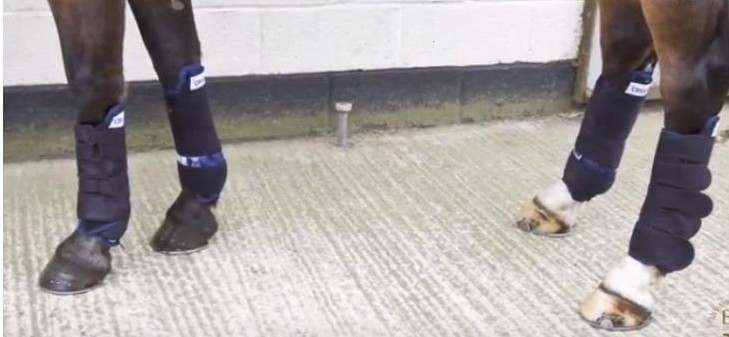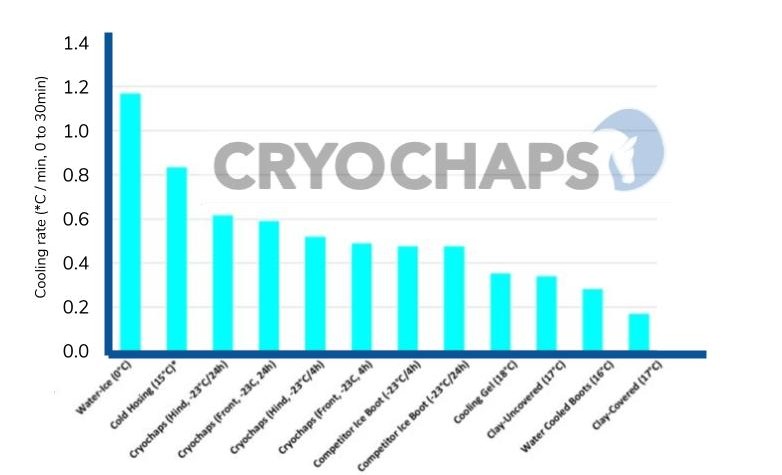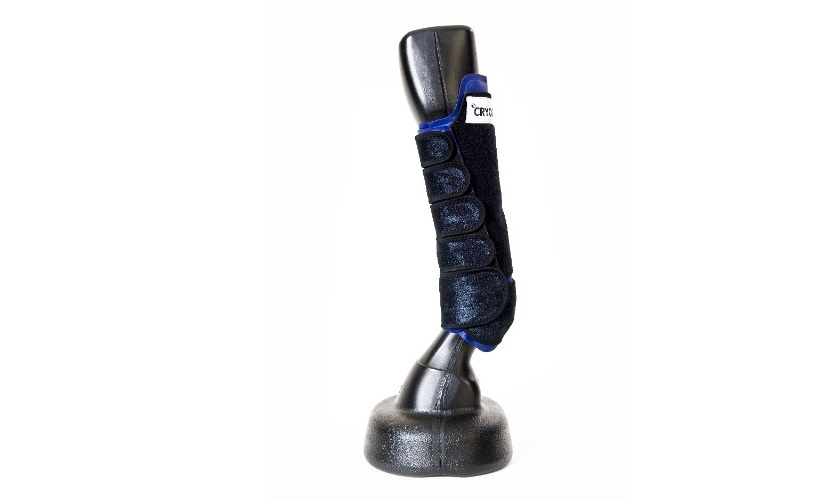Posted: 28th June 2018 | Back to news feed

Research conducted by David Marlin, a member of the Specialist Consultants Board for Equine Veterinary Education was commissioned to compare the most commonly used leg cooling methods.
CRYOCHAPS, follows the principles of ice bath technology & provides a lower leg ice wrap chap for everyday use. They target the damage that occurs in the tendons and ligaments after everyday exercise, by providing cooling & compression to help treat the build up of heat & inflammation. This can aid in recovery after exercise as well as return to fitness after injury.

A range of different commercial equine leg cooling products were tested in accordance to the manufacturer's instructions. These included CRYOCHAPS front and hind boots, a leading brand of ice boots, two leading brands of water cooled (evaporative cooling) boots, clay (covered and uncovered) and a cooling gel.
CRYOCHAPS boots cooled around 1.2x faster than a leading ice-boot competitor, 1.6x faster than the a cooling gel, 1.7x faster than a clay (uncovered), 2.1x faster than water-evaporative-cooled boots, 3.4x faster than clay (covered) and 4.6x faster than no treatment.

CRYOCHAPS ice boots performed the best of the commercial products tested, outperforming the leading ice boot. Cryochaps cooling efficiency was around 70% of that of cold hosing and half that of standing in ice and water. The boots performed better after 24h at -23°C compared with 4 hours, however, the tests indicate that using the boots after only 4 hours in the freezer would be acceptable.
The cooling gel and clay (uncovered) had the next highest efficacy, although for both products the main effect was due to the actual initial application and a conductive heat transfer rather than any longer cooling effect due to evaporation of water. Thus, the efficacy of these products is related to their initial temperature. In this case the initial temperature was 17-18°C (the store room temperature). If these products were warmer, for example after being left in a horsebox or in a tack-room on a warm-day then their cooling efficacy would be considerably lower. If these products are used then they should be kept with ice in an insulated box. However, given their low efficacy, the time to apply them and the need to clean the legs afterwards, there seems little to justify their use.
Other than clay-covered, both water boots performed the worst. This is despite the fact that the boots were soaked in water at 16°C and that testing was conducted in favourable environmental conditions (22°C/52%RH). These boots depend for their cooling effect on the evaporation of water. It is likely these boots may perform better in an environment with airflow and direct or reflected solar radiation. However, as for the gel and clay, a major component of the cooling effect was the conductive heat transfer when the boots were first applied.
The worst performing product/method was wrapped clay. Although there was some initial heat transfer on application of the clay, the covering prevented any evaporation of water within the clay and cooling taking place. There would appear to be no benefit to applying clay and covering it as a method to cool horses legs.
Out of the commercially available products tested, CRYOCHAPS achieved the lowest temperatures and the fastest cooling rates.
CRYOCHAPS - www.cryochaps.co.uk

The Equestrian Index newsfeed is compiled from articles submitted by advertising members and expresses the opinions of those members. Watsons Directories Ltd shall not be held liable for any inaccuracies or mis-statements therein.